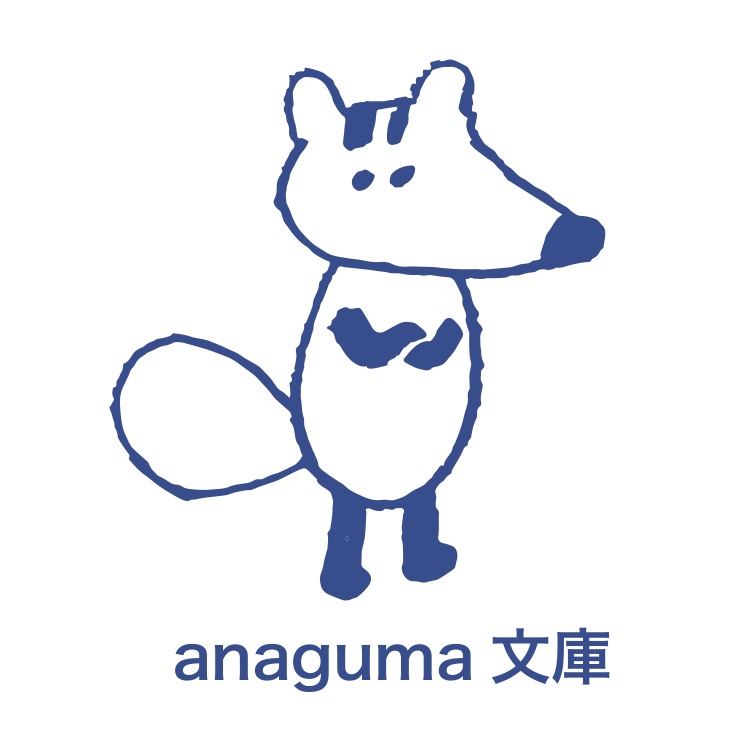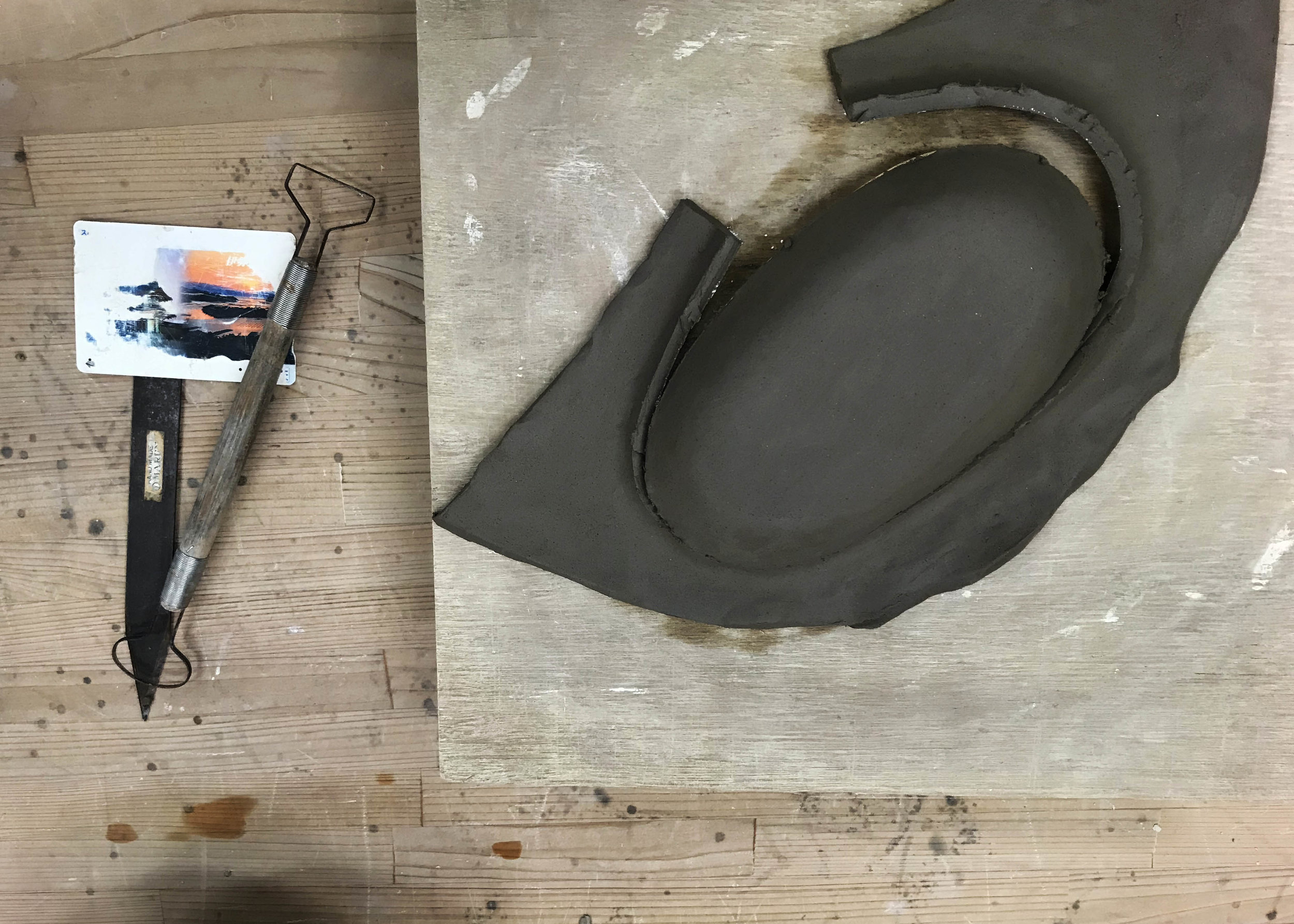(Please scroll down for the English version.)
土と手根部
6月上旬の平日の夕方に匠の聚の陶芸体験工房に下った。大きな窓越しに山々の夕焼けが見えた。その窓沿いに何台かの電動ろくろと木のスチュールが並んであった。工房の反対側の大きなテーブルに手回しろくろが何個も用意された。僕は抽選の結果でそのテーブルの手回しろくろで作業を始めた。
今夜は匠の聚の「夏の陶器」教室の1回目だった。他の13名の参加者と一緒に、合計4回の陶芸教室に参加した。僕らは鈴木智子先生の作った石膏型を一人ずつ選び、自分の手回しろくろに設置した。僕はカレーのための食器を作りたくて、長くて深みのある型を選んだ。板状粘土を石膏型の上に乗せて、手根部で粘土を型に合わせて押した。この静かな作業を続けながら、テーブルを囲んだ参加者の間、雑談が自然に始まり、流動的に進んだ。みなさんは自分のペースで自分の作りたいものに形を与えた。最後に、傷や気になったところを濡れた「なめし皮」で仕上げた。2回目の教室にその食器に色を塗った。
「夏の陶器」の3回目に、手回しろくろから電動ろくろに移った。まず、電動ろくろの真ん中に粘土をどんと投げつけた。両手を濡らし、手根部と小指の間のL型を使いながら、くるくる回る土をちょっとずつ持ち上げた。そして、右の親指で土のてっぺんを覆い、倒すように土を向こうへ押した。「それを何回も何回も練習してください!」と山本喜一先生は応援で言ってくれた。僕はラーメン鉢を狙い、粘土の真ん中に親指を両方差し込んだ。親指が凹みを作り、土を食器のような形にした。
結局、4回目の仕上げ作業をしていた時、ラーメン鉢が電動ろくろから落ちて、大きな傷がついた。鈴木雄一郎先生は筆を取り、手際よく「ドベ」の土をラーメン鉢の傷に塗った。「土の硬さが違うから、焼く時に割れてしまうかもしれません」と彼は説明してくれた。それは仕方がないと思い、ラーメン鉢の運命を窯に任せるしかない。
「夏の陶器」で土と再びつなぐことができた。石膏型にくっ付いた土、電動ろくろで永遠に回りそうな土。土を触ることは人間性の深いところとつながっているような気がする。少なくとも、この何万年前から続いてきた作業は、毎回僕にスマホを忘れさせる数時間をくれた。その時間の結果である食器を、これから日常生活で使いながら、あの土の感覚を嬉しく思い出す。
Dirt and the Heel of a Hand
On a weekday evening in early June, I stepped down into the pottery experience workshop at Takumi-no-mura. We could see the sunset over nearby mountains through the large windows. Lined up along those windows were numerous electric pottery wheels and wooden stools. On the other side of the room was a large table prepared with a number of manual pottery wheels. As the result of a lottery, I began my work with a manual wheel at that table.
Tonight was the first night of the “Summer Pottery” classes at Takumi-no-mura. The other thirteen members and I participated in a total of four pottery classes. We each chose a plaster mold made by Satoko Suzuki-sensei, and set it onto our manual wheels. I wanted to make a dish for curry, and chose one that was long with depth. I placed a board-shaped piece of clay over the plaster mold and pressed it with the heel of my hand, shaping it to the mold. While continuing this quiet work, participants around the table naturally began a conversation that just flowed along. Everyone gave shape to what they wanted to make at their own pace. Finally, we finished off any scratches or points of concern with a wet leather nameshigawa. At the second lesson, we painted color onto these dishes.
For the third Summer Pottery class, we moved from the manual to the electric pottery wheel. First, we heaved a big lump of clay onto the center of the wheel. I wet both hands, and using the L-shape between the heel of my hand and my pinky, I brought the spinning dirt up little by little. Then, covering the top of the mound with my right thumb, I pushed the dirt away from me as if knocking it down. “Practice that over and over again!” Kiichi Yamamoto-sensei said in support. Aiming to make a ramen bowl, I plunged both of my thumbs into the center of the clay. My thumbs created a hollow, and turned the dirt into the shape of a dish.
Eventually, when I was finishing it during the fourth lesson, the ramen bowl fell from the electric wheel and suffered a large tear. Yuichiro Suzuki-sensei grabbed a brush and skillfully applied wet dobe dirt to the torn part of the bowl. “The dirt’s hardness will be different, so it might crack when we bake it,” he explained. I figured that couldn’t be helped, and all I could do is leave the ramen bowl’s fate to the oven.
I was able to reconnect with dirt through the Summer Pottery classes. The dirt stuck still on the plaster mold, the seemingly infinitely spinning dirt on the electric wheel. Touching dirt seems like it is connected with a deep part of being human. At the very least, this work that has continued for tens of thousands of years always allowed me to forget about my smart phone for a few hours. The results of that time are the dishes, which I will use in my day-to-day life while I happily recall the feeling of dirt.







